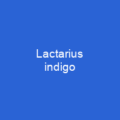Indigo: A Color of Many Meanings
Imagine a world where colors are not just seen but felt, heard, and even tasted. Indigo, that mysterious hue between blue and violet, has been woven into the fabric of human history for centuries. From ancient dyes to modern web design, indigo’s journey is nothing short of fascinating. Let’s dive in and explore this captivating color together!
The Origins of Indigo
Where does a color come from? Is it born from the earth or created by human hands? The term ‘indigo’ comes from the Latin word indicum, meaning ‘Indian,’ as the dye was originally exported from India. This ancient dye has been used for centuries to create vibrant fabrics and textiles.
The Color of Newton’s Rainbow
Isaac Newton’s prism experiment revolutionized our understanding of light and color. He saw indigo as one of the seven colors in his rainbow, but was it truly a distinct hue or just a shade of blue? Historically, Newton named the colors differently from current usage, making us wonder if we are seeing the same hues he did.
The Evolution of Indigo in Web Design
How do you describe a color when it’s only seen on a screen? In 1991, Thomas and Jim Fulton produced a list of colors for X Window Operating System, which included ‘indigo’ as a dark purple hue (#4B0082). This list became the basis for HTML and CSS colors used in websites and web design. The color indigo has since become a staple in digital art and graphic design.
The Natural World of Indigo
Nature is full of surprises, and indigo is no exception. From tropical leaves to mushrooms, this color can be found in the most unexpected places. In Sa Pa, Vietnam, indigo leaves are harvested and fermented for 3-4 days before turning blue when mixed with crushed limestone. The indigo bunting, a bird species, also showcases shades of indigo, making it a true natural wonder.
The Cultural Significance of Indigo
Indigo has played a significant role in various cultures throughout history. From the French Army adopting dark blue indigo as a military color during the French Revolution to its use in spiritual practices and modern design, this color continues to captivate us.
The Indigo Bunting
Have you ever seen a bird that looks like it’s wearing a suit? The indigo bunting is one such species. This small songbird has a striking blue plumage and can be found in North America during the summer months.
Lactarius Indigo: A Blue Mushroom
Not all mushrooms are brown or gray; some, like Lactarius indigo, are blue. This unique mushroom is not only visually striking but also has a fascinating history in folklore and medicine.
The Eastern Indigo Snake
Snakes come in many colors, but the eastern indigo snake stands out with its dark blue/black hue. This species can be found in the southeastern United States and is known for its striking appearance.
Indigo in Modern Culture
From airlines to budget travel, indigo has become a symbol of affordability and adventure. IndiGo, an Indian budget airline, uses this color in their logo, while the electric indigo used in computer graphics lighting adds a touch of mystery and intrigue.
The Color of Denim
Denim is synonymous with blue jeans, but did you know that indigo dye was originally used to create these iconic garments? The process of extracting the dye from plants like Indigofera or woad involves boiling and beating the plant material in water.
The Future of Indigo
As technology continues to evolve, so too does our understanding of colors. In 1821, Abraham Werner published a nomenclature of colors where indigo was classified as a blue hue between 420 and 450 nanometers. However, the exact definition remains disputed, leaving us with endless possibilities for exploring this captivating color.
The Indigo Aura
In the realm of spirituality, indigo is associated with paranormal auras. Psychics often link these auras to intuition and spirituality, making them a symbol of insight and expressiveness in Wicca practices.
Conclusion: The Endless Possibilities of Indigo
Indigo, that mysterious hue between blue and violet, continues to captivate us with its rich history and diverse applications. From ancient dyes to modern web design, this color has a story for everyone to discover.

You want to know more about Indigo?
This page is based on the article Indigo published in Wikipedia (retrieved on March 2, 2025) and was automatically summarized using artificial intelligence.






